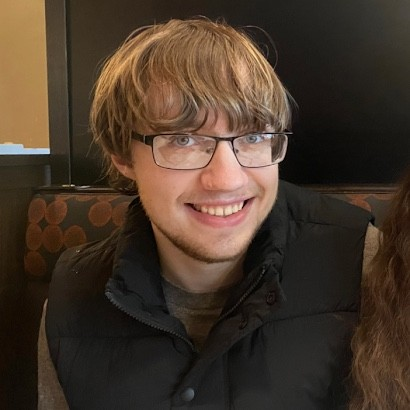CSE 440: Introduction to HCI
Spring 2023 Syllabus
Course Description
This course provides an introduction to human-computer interaction and the design process. Students will learn methods and skills for designing and prototyping interactive systems. The course covers a design process from the initial formulation of a design problem to creation of digital prototypes. Importantly, this class does not involve coding and instead, fully focuses on the design process.
The class structure is a mix of lectures, hands-on activities, and design critiques by peers and course staff. The course is overwhelmingly organized around a group project, in which students:
- Ideate and propose design problems
- Study existing design practices and challenges
- Explore potential design opportunities and tradeoffs
- Evaluate and iterate upon a design to improve it
- Communicate the problem and resulting design
Learning Objectives
- Process-focused perspective on interaction design
- Design research methods and skills
- Task-focused scenario development, sketching, and storyboarding
- Rapid prototyping and iteration
- Critical perspective on design solutions
Basic Information
Course Staff:
Contact: Please do not email us separately; instead, email all instructors at cse440-staff@cs.washington.edu. Course staff will try to respond to emails within 24 hours. If you have an urgent matter, please place “URGENT” in the subject line of the email. We cannot guarantee that we will respond immediately to urgent emails, but we will do our best.
We will also be using Ed for asking/answering questions, Internet connection or Zoom issues, etc. during class and asynchronously. TAs will be monitoring Ed so your question may be answered more quickly there.
Class Time & Location: Tuesdays & Thursdays, 10:00 AM - 11:20 AM, Location: NAN 181
Section Times & Locations:
- A: Fridays, 10:30 AM - 11:20 AM in MGH 058 (Shaan, Ethan)
- B: Fridays, 11:30 AM - 12:20 PM in MGH 058 (Shaan, Ethan)
- C: Fridays, 12:30 PM - 1:20 PM in MGH 058 (Simona, Aaleyah)
- D: Fridays, 1:30 PM - 2:20 PM in MGH 058 (Simona, Aaleyah)
Office Hours:
- Scott, Thursdays 11:30 AM - 12:30 PM.
- Location: NAN 181 or NAN 1st Floor
- Additional times available by appointment
- Simona, Thursdays 1:00 PM – 2:00 PM
- Location: Allen School 5th floor breakfast room
- Shaan, Thursdays 11:30 AM – 12:30 PM
- Location: CSE-370
- Additional office hours by appointment. Please email cse440-staff@cs.washington.edu with a few times that work for you or ping them on Ed.
Course Structure
Attendance and Participation
We will take attendance and monitor for your active participation both in class and sections. Your attendance will count towards your participation grade and may impact your contribution to the group project (details in grading policy below).
Why? This is a very hands-on class in which we will alternate between lectures and group exercises in class and in sections. You will be expected to take part in interactive discussions, group presentations and critique, breakout activities, etc. In short, this is not your usual class! We require that students attend every class and section. Please be on time to all classes and sections as your fellow group members will otherwise be waiting for you to start working on your shared project. Likewise, please do not plan to leave before class ends. Thanks for working with us to make this class a great experience for all!
If you are unable to attend due to sickness or a family emergency, please contact the course staff AND your group members in advance in order for your absence to be excused.
Update for pandemic times
Will there be remote attendance?
Expect to attend every class in person. However, since we are still in a pandemic, there may be reasons why you may not feel comfortable coming to class in person. If you are feeling any symptoms or you need to quarantine after an exposure, but you are otherwise able to attend the class synchronously, please reach out to the staff. If you are unsure about whether you should come in or not, definitely reach out to us to ask! We will do our best to be accommodating.
Materials to Bring to Each Class
It will be helpful to have a few sheets of white paper and pencils/pens available since most classes will involve some kind of sketching on paper. You are welcome to use online tools and/or tablets for these exercises if you feel like they let you sketch as you would on a piece of paper. Some activities will also require a smartphone with a camera you can use to take a photo of what you’ve sketched and upload it online if you do use paper. Please try to keep the phone away from you otherwise though :) Finally, please bring a laptop to class as sometimes we have in-class activities that involve using your web browser. But we encourage you to not use your laptop (unless you are taking notes) outside of these activities.
Online Software
We do not teach how to use specific software packages in this class, and we usually also do not require the use of specific software, but instead leave this up to each student and team to decide.
That said, in previous offerings of the class, students often found Figma, a collaborative interface design tool, useful for supporting design critiques. Once we have established teams, each team will get a board on which they can upload any design artifacts they produce. Fellow classmates and the teaching team will be able to see your progress and provide feedback.
In addition to Figma and Marvel, we will occasionally recommend the use of Miro, an online visual collaboration tool that supports sketching, brainstorming, and online white board etc. Teams should agree with each other on which tool to use.
Our Expectations
Be Professional
- Give helpful critique and feedback to other teams. You can be both constructive and kind when giving critique.
- Engage in peer learning & support.
- Show up on time and actively participate.
- Don't interrupt others, don't plagiarize.
Be Respectful
Outside of in-class activities that require the use of your laptop or phone, please keep this in mind:
- Laptops? Fine if used for taking notes. (But I highly recommend taking notes on paper!)
- Phones? Nope - please keep this out of your hands and out of sight.
- Keep in mind that when you are using your laptop to browse other things on the internet, you are also distracting the people sitting around you!
All of these things are important during a lecture but are also important when another group is presenting their work! Give others your full and undivided attention, and they will do the same for you.
A Note on Diversity and Respectful Conduct
This course welcomes all students of all backgrounds. The computer science and computer engineering industries have significant lack of diversity. This is due to a lack of sufficient past efforts by the field toward even greater diversity, equity, and inclusion. The Allen School seeks to create a more diverse, inclusive, and equitable environment for our community and our field. You should expect and demand to be treated by your classmates and the course staff with respect. If any incident occurs that challenges this commitment to a supportive, diverse, inclusive, and equitable environment, please let the instructor know so the issue can be addressed.
Disability, Religious, and Family Accommodations
If you have any questions about disability or religious accommodations, please refer to university policies regarding disability accommodations or religious accommodations. Feel free to also contact us. For any family accommodations, please do not hesitate to contact the course staff, we're here for you.
Thank you all for working with us on making this remote learning experience as smooth as possible!
Group Project
Much of the work involved in this course revolves around a group project. You will be in charge of forming a group of 3-4 people in your section near the start of the quarter. The first section meeting will be dedicated to getting to know your fellow section members and finding a group.
Project Theme: Community Engagement & Care
As we continue to emerge from the pandemic and transition from isolation and remote participation to a reconnected community, we will need to find ways to actively rebuild our connections within our communities. Because of this, the project theme for this quarter will be “Inclusive Community Engagement & Care”. This can relate broadly to designing for users who are interested in learning, connecting, and engaging within a local community by providing them structure to do so.
As part of your project, you will need to define what a specific group’s needs are that your project can help support, and what activity you would like to design to help address this need. While your design may not be able to address this head on, it may be useful to consider the conditions that allowed people's adulting difficulties and stresses to arise while conducting user research and learning from your target group. Think about how the activity you chose is currently supported via technology (or not), what doesn’t work about current ways of supporting it, and how your solution will do this better. Finally, be specific in the group you select! The specificity of addressing a particular group of people allows you to deeply think about what makes the group unique and how you would best want to support them. So, dive in and see what you can come up with!
Project Structure
Projects are organized around four assignments, each consisting of several milestones:
- Assignment 0: Introductions
- Assignment 1: Problem Setting
- Assignment 2: User Research
- Assignment 3: Ideation
- Assignment 4: Design, Prototype, and Test
- Assignment 5: Communicate and Deliver
Here are links to projects from prior offerings that can give you a feel for the type and scope of projects students have embarked on:
- Spring 2022 - https://courses.cs.washington.edu/courses/cse440/22sp/projects
- Autumn 2021 - https://courses.cs.washington.edu/courses/cse440/21au/projects
- Winter 2021 - https://courses.cs.washington.edu/courses/cse440/21wi/projects
- Winter 2020 - https://courses.cs.washington.edu/courses/cse440/20wi/projects
- Spring 2019 - https://courses.cs.washington.edu/courses/cse440/19sp/projects.html
- Spring 2017 - https://courses.cs.washington.edu/courses/cse440/17sp/projects.html
Note that we have significantly revised this class and details of assignments have changed since prior offerings. The websites and reports linked above do not reflect the assignments of the current class. For example, prior offerings of this class required a website for the final project, while this year the assignments do not include a website. Also note that these samples are intended to illustrate a variety of approaches, none of which is intended to be ideal or exemplary. Be sure to understand and carefully consider project requirements and feedback from the course staff in the context of your own work.
Exam
Outside of participation in activities during class and the assignments related to the group project, this class will also feature a final exam during the second-to-last week of class in person in our regular class time. The exam will be open-book (as in you can use any materials from the class lectures or your notes during the exam) but you will not be allowed to use any electronic devices during the exam. The subject of the exam will be on the topics covered in class lectures, and as mentioned, recordings and slides from all lectures will be available for you to use in studying. We will also be holding optional study and Q&A sessions in advance of the exam.
Grading
Strive to do good work because you care about your own opportunities to learn, including the opportunities this course provides in working with a group on an intensive project.
The overall course grade will be computed as follows (summing up to 175 points):
Point Breakdown
- Group project (135 points)
- Assignment o: Introductions (1 point)
- Assignment 1: Problem Setting (16 points)
- Assignment 2: User Research (30 points)
- Assignment 3: Ideation (26 points)
- Assignment 4: Design, Prototype, and Test (30 points)
- Assignment 5: Communicate and Deliver (32 points)
- Exam (25 points)
- Participation (15 points)
- Attendance in lecture (5 points)
- Participation in class, including participating in activities, pair feedback, and group work (5 points)
- Attendance and participation in section, including participating in presentations, group work, and giving feedback (5 points)
Each assignment will also provide a point breakdown intended to convey how it will be graded. Design is an inherently subjective practice, and so grading in this course is necessarily subjective. The stated project requirements are the minimum, leaving room for groups to wow us with your work.
Because the course is designed around feedback on project milestones, grades given to those milestones indicate that you have invested sufficient effort and insight at the time of the milestone. You will get feedback and are expected to continue acting upon that feedback in your design process. The bulk of project grades is therefore attached to the final deliverables, which are evaluated on their quality.
We expect groups to take collective responsibility and to resolve any coordination issues. The course staff is always happy to make suggestions with regard to your effort and coordination. If an issue needs to be raised with the course staff, we expect it to be raised early enough to be addressed. If necessary, we reserve the ability to adjust an individual’s participation and assignment grades based on their demonstrated contribution.
Submissions
Submissions should be in PDF format (i.e., not plain text, not Word). The PDF should be printable, containing everything we need to review and grade the assignment (e.g., your names). We will use Gradescope for groups to submit their assignments and receive feedback.
Late Policy
Generally, we expect that all assignments will be turned in on time according to their deadline on Gradescope. This is a fast-paced course, with many elements of the project depending on prior elements. Similarly, the course staff's ability to give feedback relies on timely submissions (e.g., course staff will often review your submission quickly after they are submitted to be ready for activities in section or lecture).
With that being said, if your group feels that you could really benefit from an extension or there is some kind of emergency impacting your ability to turn in assignments, please contact us BEFORE the submission deadline. We will do our best to be flexible and work with you to come up with a plan so that your group stays on track. Except in extreme circumstances, we will typically not be able to give an extension of more than 1 day.
Clarity and Presentation
Ensure all submissions are appropriately clear and easy to read. This includes:
- Text should be clear and concise.
- Use section headings as appropriate.
- Include images in the body of the write-up, with figure numbers and captions as appropriate.
- Check for typos, spelling, and grammar errors.
Be sure your presentation looks good:
- Choose appropriate colors, fonts, and styles.
- Make appropriate and liberal use of whitespace.
You should embed images throughout your PDF, keeping them near the text that references them.
Contribution Statements
Please write and submit a personal contribution statement using this Google Form every time that you submit a group assignment. This allows you to personally specify what proportion you contributed to the work done by the group. Please note that we will not grade submissions where this statement is missing from any group member. There will be a check in Gradescope reminding you that every group member must do this.
An example contribution statement for Assignment 1b is:
- I contributed 30% of the work towards this assignment. I researched the background of the problem, outlined the content of the document, wrote the first version of one paragraph, and also selected the images to be included.
Please know that we do not expect everyone to contribute equally to each assignment, but you should try to work as a team and support each other. Please come to us early if you are dealing with unresolved issues regarding unequal contributions. During the quarter, we may solicit private feedback regarding group dynamics from members.
Acknowledgements
The University of Washington acknowledges the Coast Salish peoples of this land, the land which touches the shared waters of all tribes and bands within the Suquamish, Tulalip and Muckleshoot nations.




